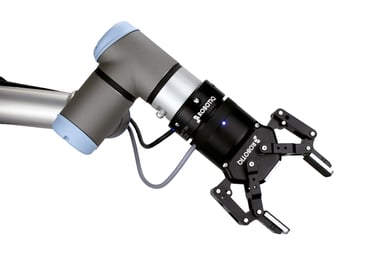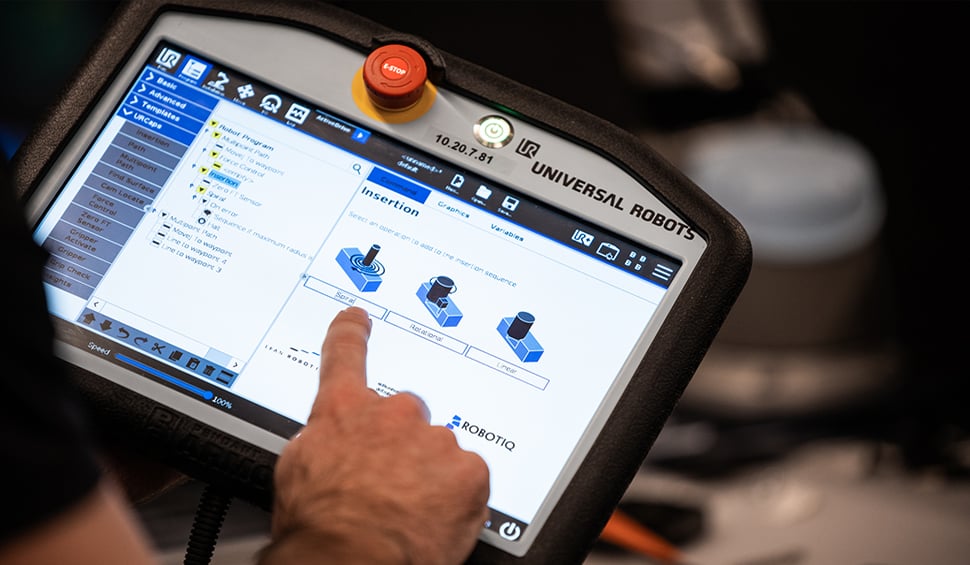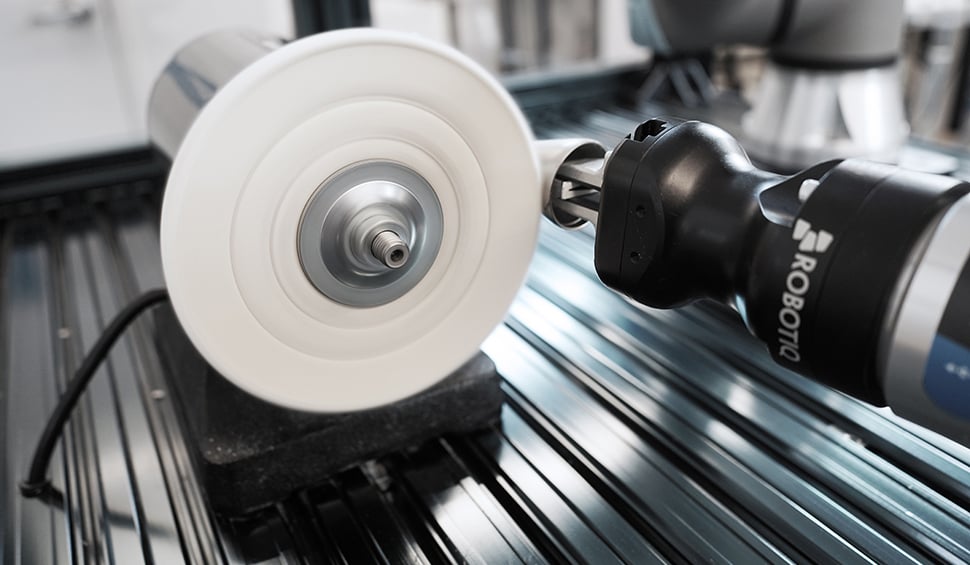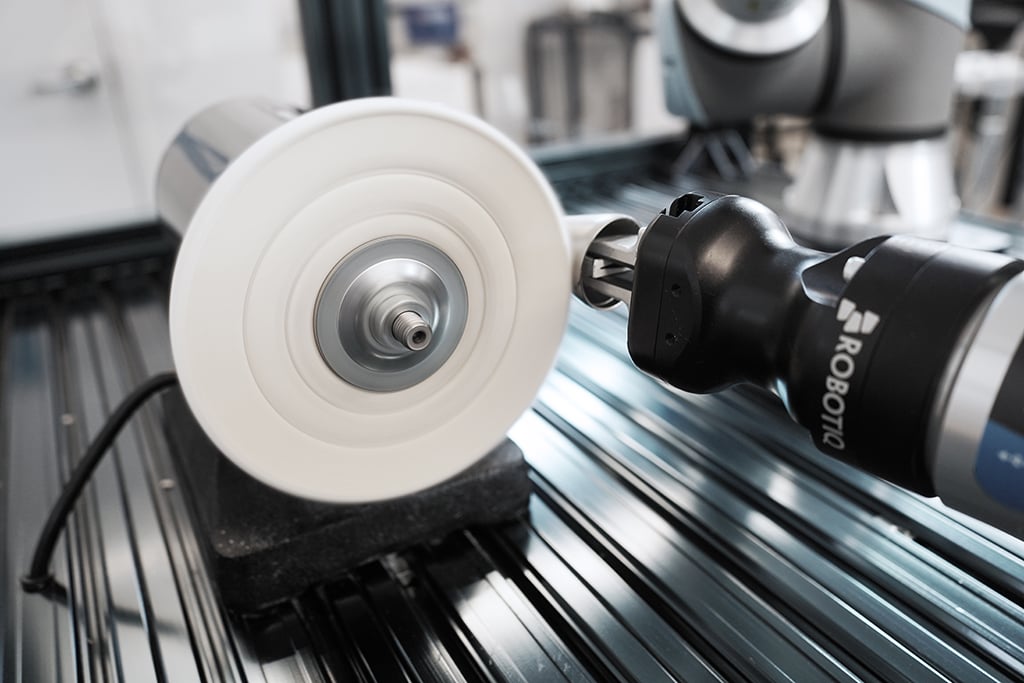How to Buy a Force Torque Sensor for Research

Posted on Mar 15, 2016 in Robot Sensors
8 min read time
It might seem a strange thing to ask but, how do you buy a Force Torque Sensor for research? Making sure you are getting the right sensor for your research can actually be quite a complicated process. There are many factors and specifications to consider. Making the right choice at the buying stage can save your good investment from becoming a big headache. This simple, 5 step process makes it easy to select the right force torque sensor for your research.
Buying any technology for research is a tricky task. As researchers, we often have a limited budget, limited time and high expectations about what technology can do for us. Researchers in many fields use force torque sensors, including physicists, mechanical engineers and product developers, not to mention roboticists. If you're a researcher using any type of force sensor, you should definitely check out our new, free eBook, Force Sensors in Robotics Research: The Essential Guide (which you can download here). Although it's focused on robotics, much of the information is relevant to all researchers.
Research Sensors Should Be "Future Proof"
Research technology must be flexible. In industrial settings, a sensor is likely to be bought for one application only. In research, the same force torque sensor might be used for dozens of different projects over many years. You want to make sure the sensor does not become just another piece of electronic junk after your current project is over.
A force torque sensor can be quite an investment, especially for small research labs or R&D departments with limited budgets. As a result, buying a force torque sensor is not usually an impulse purchase. We must carefully compare the different specifications and features of each sensor against our current requirements and possible future requirements.
One of the reasons that 6-axis force torque sensors are so popular in research is that they're quite "future proof" compared to more single use sensors. Although you might not need to measure forces in all 6 axes right now, a 6-axis force torque sensor is usually a good investment because of its flexibility, accuracy and reliability.

A 5 Step Process for Choosing the Right Force Torque Sensor
In the past, when a member of the general public wanted to buy a washing machine, they would just walk into a store and buy the model recommended by the salesperson. Those days are gone. These days, many people buy new technology in the same way that researchers do. Most researchers perform a thorough review of the market, then weigh up the pros and cons of each manufacturer and model before committing to buying a product. Force torque sensors are no different. Here is a procedure for making sure you buy the right force torque sensor for your research.
Step 1: Define Your Application and Operating Environment
Before buying a force torque sensor, you need to decide what tasks you are going to use it for. Of course, you may use the sensor for other tasks later on, but we've got to start somewhere.
First, ask yourself some questions about your application:
- Will you require multiple sensors?
- Do you need to measure dynamic forces, static forces or both?
- For how many axes do you want to measure force?
- Where will the sensor be fixed?
- What aspects of the force data are most important to your research?
- What is the smallest force change the sensor should be able to measure?
Then, think about the working environment where the force sensor will operate:
- Will there be a lot of electrical noise in the environment?
- Are there any extremes of temperature, humidity, atmospheric pressure etc?
- Will the environment itself be subject to movement (e.g. vibrations)?
- Will the environment be clean or will there be a large amount of dust?
- What other aspects of the environment might affect the sensor's operation?
Such questions will help you to narrow down the operating parameters. In our free, 4-part email series, we include a list of resources where you find even more questions to ask yourself about the application and working environment.
Step 2: Define Your Current Resources

After you have defined your applications, you should assess your own resources. These will affect which force torque sensor you choose. For example, space restrictions will determine the maximum size of the sensor. Time restrictions will determine whether or not you require a more "plug and play" type sensor.
Be realistic about the amount of resources you can devote to integrating the sensor into your existing systems. For example, some sensors might require you to add low-level electronics (e.g. analog circuits or TTL). These will take longer to integrate than sensors which include their own electronics. The benefits may (or may not) be worth it.
- How much of a budget do you have available for the sensor?
- What electrical interface options can you already support?
- Do you need a force torque sensor with integrated electronics?
- How much time and work can you devote to the integration of the sensor?
- What are the limits for the mechanical interface and size of the sensor?
In research, it's easy to forget about some of these other factors and just focus on the monetary cost. However, other factors are equally important, even though they might not be so tangible. Picking a force torque sensor which easily integrates into your existing systems allows you to spend more of your efforts on the most important parts of your research.
Step 3: Balance Your Specifications
As with many engineering decisions, choosing between different products is a balancing act. Products with better technical specifications usually cost more. Sensors with high performance in one specification might have low performance in another. Do you really need the best sensor or can you sacrifice a bit of performance? Which specifications are vital to your application? Which can you live without? Take time to work out what performance you will actually require of the force torque sensor. You will want to shop around for sensors which can supply at least that performance, or a little more.
List each specification in order of preference. Some specifications will be vital for your application, others will be less important. Here are a few of the most important specifications for force torque sensors. For a more comprehensive list and more detail, check out our free eBook.

- Force and Torque Measuring Range - This is the range of force and torque that the sensor can measure. They are often listed separately on manufacturer datasheets. To choose this value, calculate the highest force which you will want to measure in all directions. Don't forget dynamic forces! These are higher than static forces and dependent on the velocity of impact.
- Maximum Overload Capacity - This value represents the force which will provide permanent damage to the sensor. On the datasheet it is usually defined by a force (e.g. 1kN) or a multiple of the measurement range (e.g. 500%). You really don't want to be applying forces which are even close to this value.
- Frequency/Maximum Data Output Rate - The Maximum Data Output Rate defines the maximum sampling frequency of the sensor. This determines how often the sensor can provide new force data. Work out which frequency you require for your application and choose a force torque sensor which can supply at least this frequency.
- Precision - There are three different specifications for precision which can be applied to force torque sensors: Resolution, Accuracy and Repeatability. The most common to see on a datasheets is Resolution, which is the minimal change in force that the sensor can measure.
- Sensing Technology - There are many technologies used for measuring force, including piezoelectric, resistive and hydraulic. Some technologies are more suited to particular applications and environments than others. Traditionally, most multi-axis force torque sensors use strain gauge technology. However, there are also other technologies available, such our capacitive Force Torque Sensors which are more suited to environments with high electrical noise.
You can find much of this information on the datasheet from the sensor manufacturer. Sometimes there will be missing information or a manufacturers will list the specifications using different measurements.
Step 4: Review the Market
When you have defined your application, resources and specifications, it's time to "shop around" for different force torque sensors. This means making a thorough review of the market to find out what type of force torque sensors are available.
For each potential sensor, you'll want to:
- Go to the manufacturer's website and download the specifications sheet.
- Contact the manufacturer, or a distributer, to ask for current prices.
- Ask other researchers about their experiences with particular force torque sensors.
- Collate all the information you find in a spreadsheet or other tabular document.
Once you have collected information about several force torque sensors, you should look critically at each one. Ask yourself:
- What are the features and benefits of each model?
- Are there disadvantages to any of them?
- What are you gaining/losing with each model?
- Which model best suits your application?
- Which model would you buy if budget was no issue?
- Which model provides the bare minimum specifications while still suiting your needs?
One added advantage of performing a systematic search like this is that you can include it in your research reports. This provides good justification for your research budget. By this point, you should be pretty clear about which force torque sensors is the most suited for your research. You can then go ahead and buy it!
Step 5: Buy Your Force Torque Sensor and Use It!
Most force torque sensors provide a great source of clean, high quality data which you can use in your research papers. For tips on how to best present force data in your research, make sure to download our free eBook and email series. The eBook has a whole section on how to use force data in your research and the emails include a load of resources on how best to present force data in publications and reports. Download it by clicking the big button below! (Did we mention, it's free!)
What specifications are the most important for your research? What process do you usually use to buy new technology? Do you have any questions about force sensors? Tell us in the comments below or join the discussion on LinkedIn, Twitter or Facebook.





Leave a comment